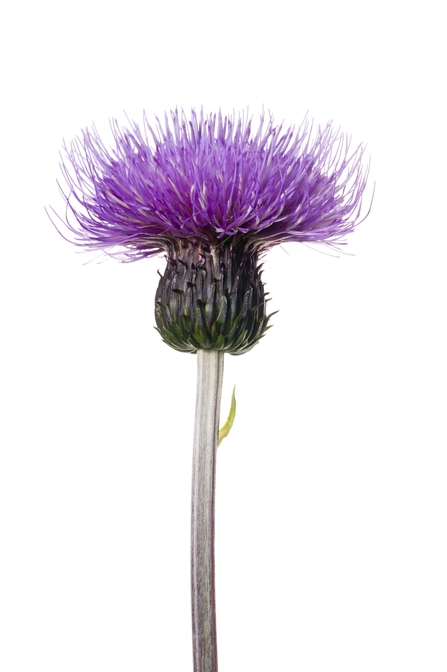 |
| Wildflowers |
As its name suggests, the Melancholy thistle was once used to treat 'melancholia' (depression). Today, it can be found in upland hay meadows showing off its single, purple, thistle-like flower head.
Species information
Category
Statistics
Height: 0.5-1.2m
Conservation status
Protected in Northern Ireland under the Wildlife Order, 1985.
When to see
July to August
About
The Melancholy thistle is a plant of upland pastures in the north of the UK. It can be found in high summer in unimproved upland hay meadows, open woodlands, and along streams and roadside verges. It has a distinctive, usually solitary, purple-red thistle-like flower head that initially droops.
How to identify
The tall Melancholy thistle displays solitary flower heads of red-purple florets (tiny flowers) surrounded by oval, purple-tinged bracts (leaf-like structures). Unlike other thistles, it doesn't have spines and its leaves have a dense white felt on their undersides.
Distribution
Mainly found in the in Scotland, Northern England and North Wales.
Habitats
Did you know?
The name of the Melancholy thistle is thought to derive from its historical use as a potion to prevent 'melancholia' - a form of depression.
How people can help
The Wildlife Trusts look after many meadow habitats using traditional methods, such as hay-cutting, reseeding and grazing, for the benefit of local wildlife. We are also working closely with farmers and landowners to promote wildlife-friendly practices in these areas. You can help too: volunteer for your local Wildlife Trust and you could be involved in everything from stock watching to surveying meadow flowers.


ConversionConversion EmoticonEmoticon